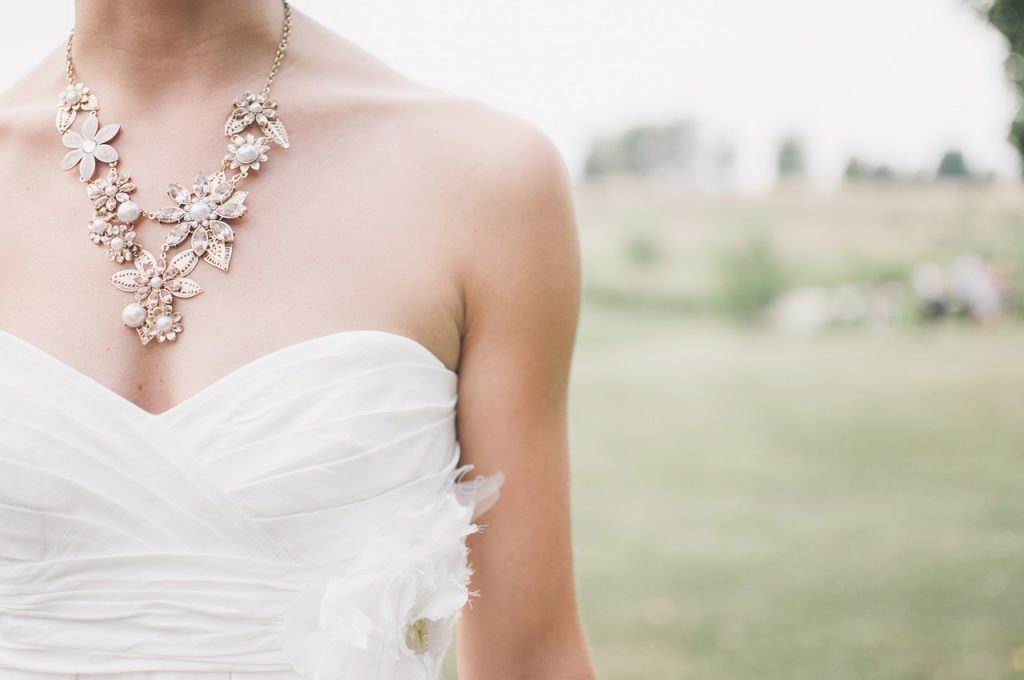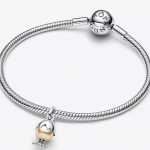Fine jewelry, a world of exquisite craftsmanship and unparalleled beauty, has captivated humanity for centuries. Its allure transcends time, and it symbolizes not only wealth and status but also love, emotion, and artistry. In this comprehensive guide, we delve into the fascinating universe of fine jewelry, from its rich history to the art of wearing it, and even its significance as an investment.
History of Fine Jewelry
- Origins of Fine Jewelry: Fine jewelry traces its roots back to ancient civilizations, where artisans crafted intricate pieces from materials like gold and gemstones. These early pieces were symbols of power and prestige.
- Evolution over the Centuries: The craft of fine jewelry has evolved, with each era contributing to its unique styles and designs. From the Renaissance to the Art Deco period, history has left an indelible mark.
- Iconic Pieces from History: The world has witnessed the creation of iconic jewelry pieces, such as the Hope Diamond and the Crown Jewels. Their stories are steeped in legend and mystique.
Types of Fine Jewelry
- Precious Metals and Gemstones: Fine jewelry often features precious metals like gold and platinum, adorned with high-quality gemstones such as diamonds, sapphires, and emeralds.
- High-end Brands and Designers: The industry boasts renowned brands and designers like Cartier, Tiffany & Co., and Bulgari, who have shaped fine jewelry trends for generations.
- Custom-Made Fine Jewelry: Many individuals seek the exclusivity of custom-made pieces, tailored to their preferences and personality.

The Craftsmanship
- Artisans and Their Skills: The art of fine jewelry-making relies on skilled artisans who meticulously craft each piece, combining traditional techniques with modern innovations.
- The Process of Creating Fine Jewelry: From concept to creation, understanding the step-by-step process of crafting fine jewelry is a testament to the dedication of artisans.
- Quality and Attention to Detail: Fine jewelry is distinguished by its quality and the meticulous attention to detail in every facet of its design and production.
Investing in Fine Jewelry
- Fine Jewelry as an Investment: Many collectors view fine jewelry as a valuable investment. Its rarity and enduring appeal often make it a secure asset.
- Factors that Affect Value: The value of fine jewelry can be influenced by factors such as provenance, design, and market demand.
- Tips for Making a Wise Investment: To navigate the world of fine jewelry investments, it’s crucial to have a sound strategy and an understanding of market trends.
The Art of Wearing Fine Jewelry
- Occasions for Wearing Fine Jewelry: Fine jewelry can enhance various occasions, from everyday wear to special events like weddings and parties.
- Styling and Matching Jewelry: Knowing how to pair and style jewelry can elevate your overall look, making it a powerful fashion statement.
- Etiquette and Trends: Understanding the etiquette of wearing fine jewelry and staying updated on the latest trends ensure you make a lasting impression.
Caring for Fine Jewelry
- Cleaning and Maintenance: Proper care and maintenance are essential to preserve the beauty and value of fine jewelry.
- Safe Storage and Handling: Learn the best practices for storing and handling your precious pieces to prevent damage or loss.
- Expert Advice on Preservation: Expert guidance from jewelers and conservators is invaluable in maintaining your collection.
The Symbolism of Fine Jewelry
- Cultural and Historical Significance: Fine jewelry often carries cultural and historical symbolism, representing love, tradition, and beliefs.
- Sentiments and Emotions Attached: Many pieces hold emotional value, passed down through generations, and bearing the memories of loved ones.
- Gifts and Heirlooms: Fine jewelry makes cherished gifts and is often passed on as heirlooms, creating a legacy of sentiment.
Ethical and Sustainable Fine Jewelry
- The Importance of Responsible Sourcing: Ethical consumers demand transparency in the sourcing of materials to ensure no harm to the environment or human rights.
- Eco-friendly Practices in the Industry: Sustainable practices, from recycling metals to using lab-grown gems, are gaining traction in the industry.
- Supporting Ethical Brands: Many brands are committed to ethical and sustainable practices, giving consumers the option to support responsible choices.
Famous Fine Jewelry Pieces
- Legendary Jewelry Stories: Dive into the stories behind legendary pieces like the Taylor-Burton Diamond and the Star of India.
- Iconic Red Carpet Moments: Fine jewelry has shone brightly on red carpets, worn by celebrities in unforgettable moments.
- Historical Auctions and Records: Witness the extraordinary prices fetched at auctions for exceptional jewelry.

Challenges in the Fine Jewelry Industry
- Counterfeits and Fraud: The industry faces challenges from counterfeit products and fraudulent practices that undermine consumer trust.
- Environmental Concerns: Mining and sourcing practices raise environmental concerns, leading to increased scrutiny and calls for change.
- Changing Consumer Preferences: Evolving consumer tastes and demands drive the need for innovation and adaptation.
Trends in Fine Jewelry
- Current Design and Fashion Trends: Explore the latest design trends, from minimalist styles to bold and unconventional designs.
- Emerging Materials and Techniques: Innovations in materials and technology are expanding the possibilities in fine jewelry creation.
- The Role of Technology: Technology, such as 3D printing and virtual try-ons, is reshaping how consumers experience fine jewelry.
Fine Jewelry as an Art Form
- Fine Jewelry in the World of Art: Many fine jewelry pieces are celebrated as works of art and have found their place in art galleries and museums.
- Collaborations with Artists and Designers: Renowned artists and designers often collaborate with jewelry brands, resulting in unique and artistic collections.
- Museums and Exhibitions: Museums and exhibitions showcase the artistry and history of fine jewelry, allowing visitors to immerse themselves in its beauty.
Personal Stories and Testimonials
- Real-life Experiences with Fine Jewelry: Personal stories and testimonials from collectors and enthusiasts offer insights into the passion and connection people have with fine jewelry.
- Sentiments and Anecdotes from Collectors: The emotional and sentimental aspects of fine jewelry collection are shared through heartfelt anecdotes.
- Passion for Collecting: Many collectors share their passion for fine jewelry and what drives their enthusiasm for this art form.
Conclusion
In conclusion, fine jewelry is more than just ornaments; it’s a testament to human creativity, history, and emotions. Its enduring appeal and significance are woven into the fabric of our culture. As we continue to explore the world of fine jewelry, we are reminded of its timeless allure and the lasting legacy it leaves behind.
FAQs
- What makes a piece of jewelry “fine” jewelry? Fine jewelry is characterized by the use of high-quality materials like precious metals and gemstones, as well as exceptional craftsmanship. It often features intricate designs and is known for its enduring value and beauty.
- Is fine jewelry a good investment? Fine jewelry can be a valuable investment, especially when it includes rare or renowned pieces. However, the value of fine jewelry can fluctuate, so it’s essential to research and choose wisely.
- How can I care for my fine jewelry to ensure it retains its beauty? Proper care involves regular cleaning, safe storage, and handling. It’s also advisable to have your fine jewelry professionally inspected and maintained by experts.
- What are some of the most famous fine jewelry pieces in history? Famous pieces include the Hope Diamond, the Cullinan Diamond, and the Crown Jewels of various monarchies. These pieces have intriguing histories and are celebrated for their beauty and significance.
- What ethical and sustainable practices should I look for in the fine jewelry industry? Ethical practices include responsible sourcing of materials and transparency in supply chains. Sustainable practices encompass eco-friendly approaches to production and a commitment to reducing environmental impact.
 Vertel Jouw Verhaal met Pandora Moments: Ontdek de Betekenis Achter Elke Bedel
Vertel Jouw Verhaal met Pandora Moments: Ontdek de Betekenis Achter Elke Bedel  Lolelife Product Reviews: Perfect Choices for Health and Comfort
Lolelife Product Reviews: Perfect Choices for Health and Comfort  Runway Extravaganza: Highlights from Major Shows
Runway Extravaganza: Highlights from Major Shows  Gloves, Gloves, Gloves: A Touch of Elegance
Gloves, Gloves, Gloves: A Touch of Elegance  Accessorizing 101: Elevate Your Outfits
Accessorizing 101: Elevate Your Outfits  Stylish Hats and Caps: The Crowning Glory
Stylish Hats and Caps: The Crowning Glory  Shine Bright: Exploring the World of Fine Jewelry
Shine Bright: Exploring the World of Fine Jewelry 